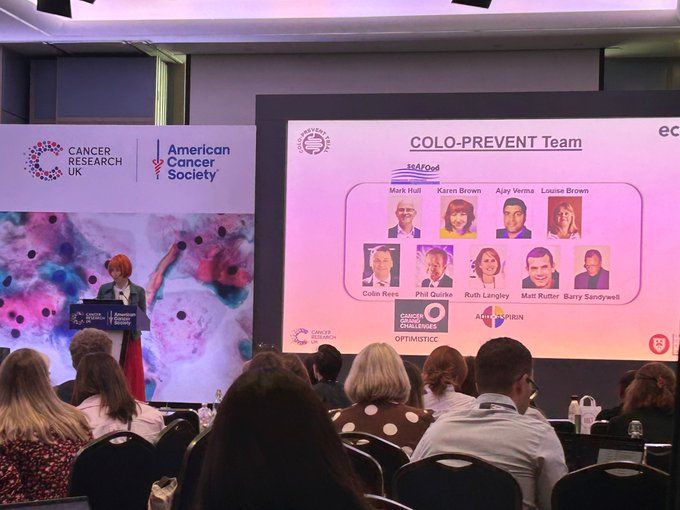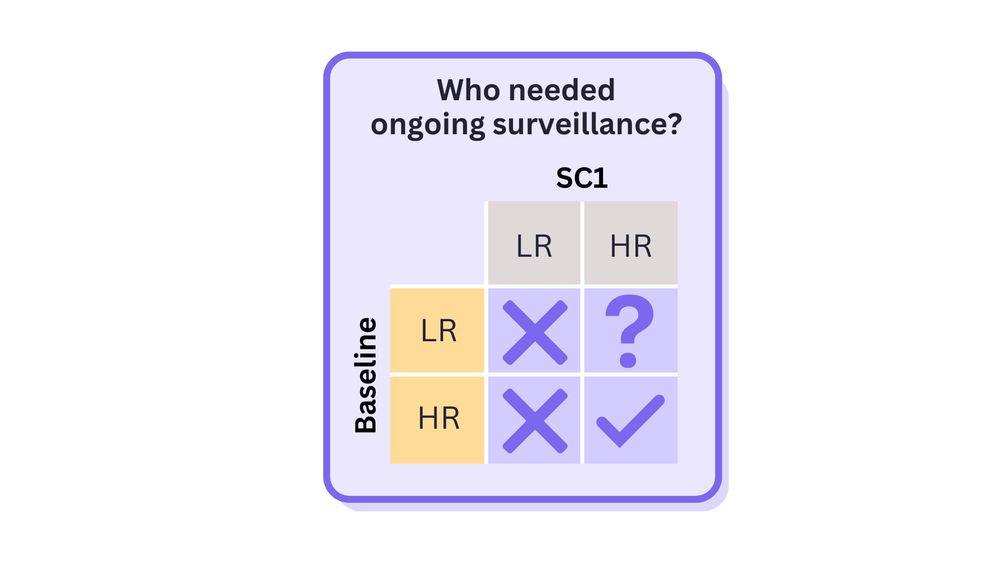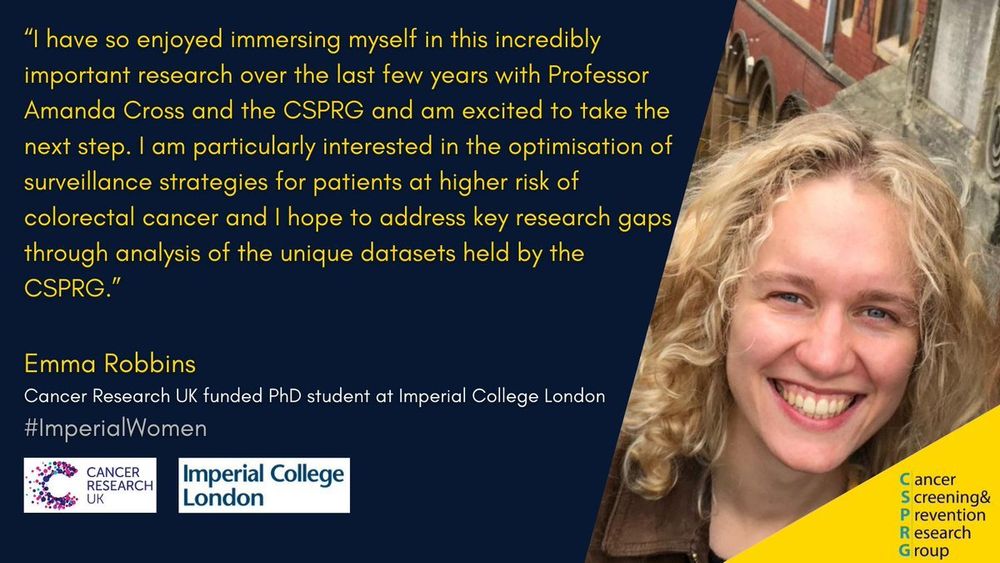
Funded by @cancerresearchuk.org & @nihr.bsky.social.
https://csprg.org.uk/
https://tinyurl.com/8v6y7zms
#PhD candidate Rawan Maawadh (supervisor Prof Amanda Cross) giving a talk on 'Proteomic Signatures of #Obesity and their Associations with #ColorectalCancer in a Case-Cohort Study in EPIC'

#PhD candidate Rawan Maawadh (supervisor Prof Amanda Cross) giving a talk on 'Proteomic Signatures of #Obesity and their Associations with #ColorectalCancer in a Case-Cohort Study in EPIC'
✅Heavyweight academics slug it out over GLP1 agonists importance (or not) for #cancerprevention
✅Prof Karen Brown weighs in on drugs for precision cancer prevention
www.cancerresearchuk.org/funding-for-...


✅Heavyweight academics slug it out over GLP1 agonists importance (or not) for #cancerprevention
✅Prof Karen Brown weighs in on drugs for precision cancer prevention
www.cancerresearchuk.org/funding-for-...
Impact
Effective allocation of surveillance colonoscopies is crucial to protect higher-risk pts from CRC while minimising invasive procedures for low-risk pts.
Our unique data will inform recommendations for ongoing surveillance in future post-polypectomy surveillance guidelines.
Impact
Effective allocation of surveillance colonoscopies is crucial to protect higher-risk pts from CRC while minimising invasive procedures for low-risk pts.
Our unique data will inform recommendations for ongoing surveillance in future post-polypectomy surveillance guidelines.
Conclusion
Pts with high-risk findings at both baseline & SC1 needed a second surveillance colonoscopy, whereas those with low-risk findings at SC1 did not, regardless of their baseline findings.
We couldn't draw conclusions for the LR-HR group due to limited CRC cases.

Conclusion
Pts with high-risk findings at both baseline & SC1 needed a second surveillance colonoscopy, whereas those with low-risk findings at SC1 did not, regardless of their baseline findings.
We couldn't draw conclusions for the LR-HR group due to limited CRC cases.
Findings:
Compared to the general population, CRC incidence after SC1 was:
▪️ ~0.5 times lower in the LR-LR group
▪️ - Non-significantly different in the HR-LR or LR-HR groups, although the 95%CI for the LR-HR group was wide due to few CRC cases
▪️ - ~3 times higher in the HR-HR group

Findings:
Compared to the general population, CRC incidence after SC1 was:
▪️ ~0.5 times lower in the LR-LR group
▪️ - Non-significantly different in the HR-LR or LR-HR groups, although the 95%CI for the LR-HR group was wide due to few CRC cases
▪️ - ~3 times higher in the HR-HR group


